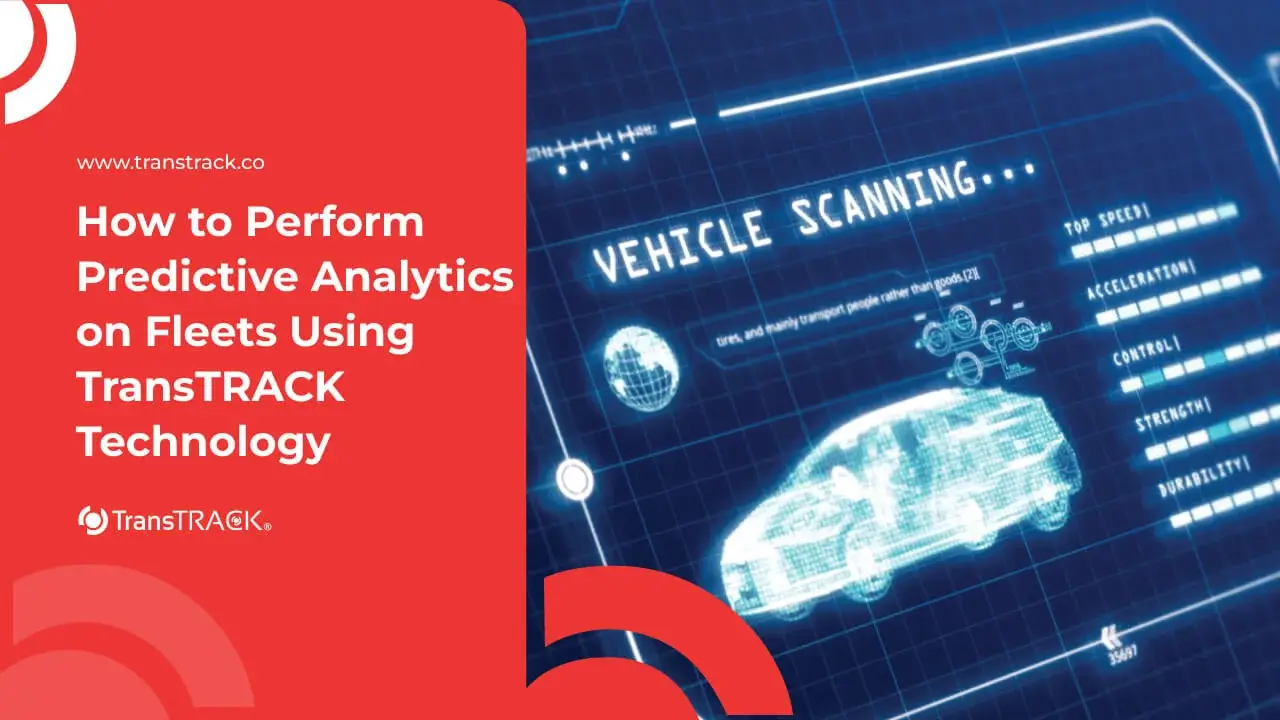How to Perform Predictive Analytics on Fleets Using TransTRACK Technology
Posted on January 28, 2025 by Nur Wachda Mihmidati

In the world of fleet management, efficiency and safety are key to success. Predictive analytics technology is now a very useful tool in meeting these challenges. With the ability to predict problems before they occur, companies can optimize fleet operations, reduce costs, and improve overall performance. One of the best solutions to achieve this goal is by utilizing TransTRACK TransTRACK technology. This article will discuss how you can implement predictive analytics on your fleet using TransTRACK to achieve more optimized results.
Predictive Analytics
Predictive analytics is a data analysis technique that uses historical data and algorithms to predict future outcomes. In the context of fleets, this technology identifies trends and patterns that help in making more informed and proactive decisions, such as predicting vehicle maintenance needs and route optimization. With data collected from vehicles, algorithms can anticipate problems such as engine failure or inefficient fuel consumption before they occur.
The application of predictive analytics in fleet management can increase operational efficiency, reduce costs, and improve safety. For example, by predicting when vehicles require maintenance, companies can reduce downtime and avoid costly unexpected repairs. In addition, the technology also enables route optimization to save fuel and improve safety by detecting potential problems earlier.
Getting to know TransTRACK Technology
TransTRACK is a technology-based platform designed to help companies manage their fleets more efficiently through real-time data monitoring and analysis. Using IoT (Internet of Things) devices, TransTRACK collects vehicle operational data, such as speed, location, fuel consumption, and vehicle condition. The data is then analyzed to provide insights that can be used to improve operational efficiency, reduce costs, and extend vehicle life.
One of TransTRACK’s standout features is its ability to support predictive analytics. By utilizing the data collected, TransTRACK can predict vehicle maintenance needs, detect potential breakdowns before they occur, and optimize travel routes. This technology enables companies to make more informed data-driven decisions, improve fleet safety, and reduce downtime and maintenance costs.
Key Features that Support Predictive Analytics
- Real-Time Monitoring: Provides live data on vehicle location, speed, and condition.
- Maintenance Requirement Prediction: Uses algorithms to estimate when vehicles require service or maintenance.
- Route Optimization: Assists in determining the most efficient route based on trip data and fleet conditions.
Advantages of TransTRACK over Similar Technologies
- Easier Integration: TransTRACK easily integrates with existing fleet management systems.
- Friendly User Interface: Offers an intuitive dashboard for data visualization and analysis.
- High Prediction Accuracy: Uses advanced algorithms that provide more accurate predictions regarding vehicle maintenance and management.
- Improved Cost Efficiency: With the ability to optimize maintenance and routes, TransTRACK helps reduce operational costs and increase fleet productivity.
Steps to Perform Predictive Analytics on Fleet
The following steps can be followed to perform predictive analytics on a fleet using TransTRACK technology:
- Data Collection: Vehicle operational data such as location, speed, fuel consumption, and vehicle condition are collected in real-time using technologies like TransTRACK. This data also includes maintenance records and trip history.
- Data Processing: Collected data is then processed and prepared for analysis. Incomplete or flawed data needs to be cleaned and validated to ensure accurate results.
- Data Analysis: Using machine learning algorithms and statistics, data is analyzed to identify patterns and trends. For example, fuel usage patterns, frequency of breakdowns, or early indicators of vehicle maintenance needs.
- Predictive Modeling:
Based on the analysis, a predictive model is created to project future events, such as when the vehicle is likely to need maintenance or when there is an increased risk of breakdown. - Implementation of Analysis Results: Once the predictive model is ready, the analysis results are used for proactive measures. These include timely scheduling of vehicle maintenance, fuel savings, or optimization of travel routes to avoid potential problems.
- Monitoring and Adjustment: The analysis process needs to be monitored continuously to ensure accurate results. Predictive models can be adjusted based on new data and observations to improve performance and efficiency.
By following these steps, predictive analytics can provide valuable insights for more efficient and cost-effective fleet management.
Challenges and Solutions in Using Predictive Analytics on Fleets
While predictive analytics offers many benefits, its application in fleet management is not free from challenges. Several technical and operational barriers often interfere with the effectiveness of analysis and predictions. For this reason, the right solutions are required for this technology to be implemented to its full potential.
Here are the common challenges faced and the solutions offered by TransTRACK:
Common Challenges in Data-driven Fleet Management
- Inconsistent Data Quality: Incomplete or flawed data can hamper the accuracy of analysis and predictions.
- System Integration Complexity: Integrating predictive analytics technology with existing fleet management systems often requires great effort.
- Limited Resources: Many companies struggle to allocate enough resources to effectively analyze data and generate useful insights.
- Difficulty in Interpreting Data: Big data collected from various vehicles can be very complex and difficult to interpret without the right analytics tools.
Solutions Offered by TransTRACK
- Real-Time Data Collection: TransTRACK collects data automatically and in real-time, ensuring that the data used in analysis is always up-to-date and more accurate.
- Easy Integration: TransTRACK is designed to be easily integrated with existing fleet management systems, reducing technical barriers to implementation.
- Intuitive User Interface: With its easy-to-understand dashboard, TransTRACK allows fleet managers to easily interpret analysis results without requiring in-depth technical expertise.
- Advanced Algorithms for Precise Predictions: TransTRACK uses machine learning algorithms to analyze data and provide more accurate predictions, overcoming the difficulty in understanding big data.
- Analysis Automation: With automation features, TransTRACK reduces the burden on human resources, allowing analysis to be done more efficiently and quickly.
TransTRACK helps address these challenges, making the use of predictive analytics more affordable, effective, and easy to implement in fleet management.

By adopting predictive analytics technology through TransTRACK, fleet companies can improve operational efficiency, reduce costs, and ensure vehicle safety. If you’re ready to take your fleet management to the next level, it’s time to utilize the full potential of TransTRACK. Contact us today to start your fleet transformation!
Recent Post
Topic :
 Bahasa Indonesia
Bahasa Indonesia









